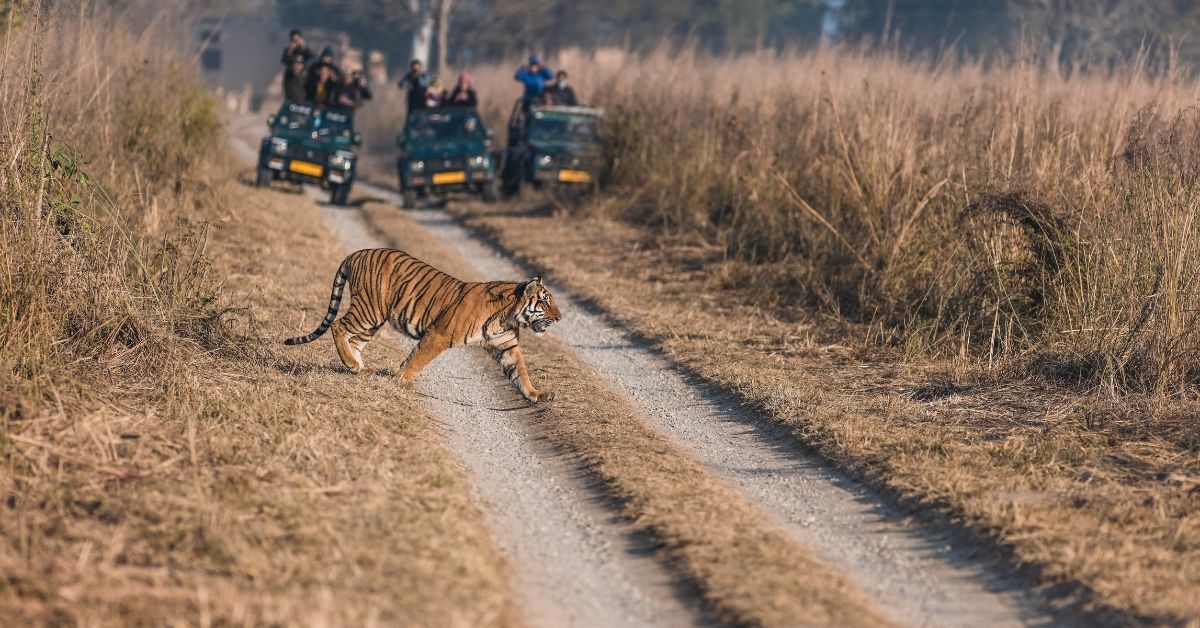
Nestled in the Nainital district of Uttarakhand, Jim Corbett National Park is a sanctuary that epitomizes the raw beauty of nature. Despite its proximity to Nainital, Corbett shares the climate characteristics of North India’s plains, such as Delhi and NCR, experiencing scorching summers and cool winters. However, unlike its urban counterparts, Corbett boasts a pristine environment, with lush mango and litchi orchards framing the landscape. For those planning a visit, understanding the seasonal variations is crucial to make the most of this wild paradise. Here’s a detailed guide on the best time to visit Jim Corbett National Park.
If you want to experience the park at its best, October to February is your window. The winter months transform Corbett into a picturesque haven, with temperatures ranging from a chilly 5°C to a pleasant 20°C. The post-monsoon greenery flourishes, offering a vibrant and refreshing backdrop. These months are perfect for nature lovers and wildlife photographers, as the clear skies and crisp air enhance visibility, making animal spotting more frequent and rewarding.
During this period, the park’s flora is at its lushest, providing ample cover for wildlife. Tigers, elephants, deer, and various bird species are more likely to be seen near water sources, as the rivers and streams are replenished after the rains. This season also coincides with the blooming of wildflowers, adding splashes of color to the verdant landscape.
As winter transitions to spring, Corbett enters a phase of mild warmth with temperatures oscillating between 15°C and 30°C. This period is ideal for visitors who prefer a more temperate climate. The forest starts to dry up slightly, making it easier to spot wildlife. The park is less crowded compared to the summer months, ensuring a more serene and immersive experience.
The spring season is also the breeding period for many animals, including the majestic Bengal tiger. Birdwatchers will find this time particularly rewarding as migratory birds join the resident species, creating a vibrant avian spectacle. The pleasant weather allows for extended safari rides without the fatigue that accompanies the hotter months.
May and June usher in the sweltering summer, with temperatures soaring up to 40°C. While the dry heat might deter some, it also has a unique advantage – wildlife is more visible as animals congregate around diminishing water sources. However, the intense heat can be unbearable for many visitors, especially during mid-day safaris.
This period coincides with the school summer vacations in India, leading to a surge in family visitors. The influx of tourists can make the park crowded, diminishing the chances of sighting shy and elusive animals. Additionally, the increased human activity can disrupt the natural behavior of the wildlife, making safaris less fruitful for serious enthusiasts.
For those who can brave the heat, early morning and late afternoon safaris are recommended. These times are relatively cooler and increase the likelihood of spotting predators like tigers and leopards, which are more active during the cooler parts of the day.
The monsoon season, from July to September, brings heavy rainfall to Jim Corbett National Park. While the park is technically open, many parts become inaccessible due to waterlogged trails and swollen rivers. The park’s administration often closes several zones for safety reasons, limiting the areas available for safaris.
Despite these challenges, the monsoon breathes new life into the forest. The landscape transforms into a lush, green paradise, with the vegetation thriving under the abundant rainfall. For those who enjoy the tranquility of rain and the vibrant resurgence of flora, this period can offer a unique, albeit restricted, experience.
However, wildlife sightings are rare during this season as animals seek shelter from the rain and the dense foliage provides ample cover. Moreover, the risk of encountering leeches and insects is higher, which can be a deterrent for many visitors.